Exposure therapy for women with lifelong vaginismus has the aim to overcome fear of vaginal penetration not only for the penis but also for fingers and tampons. The results are amazing with a success rate of 90% within two weeks.
This blog is based on an interview with Reinhilde Melles. She is a clinical psychologist and sexologist at the Maastricht University Medical Center (MUMC+). Reinhilde recently obtained her PhD on: ‘Vaginal penetration: pain or pleasure? The role of fear and sexual arousal.
Pelvic physiotherapists know that the pelvic floor muscles can tighten as a response to fear. Therefore it is important to consider what the women are feared of and help them to get used to the relaxation of the pelvic floor muscles and learn how to relax them.
Explanation of the exposure therapy for women with lifelong vaginismus:
We schedule three exposure sessions within one week. The first exposure session takes three hours and the other two take two hours each. The partner is always present during the exposure sessions.
Women who are traumatized or with post-traumatic stress disorder related to the genitals or sexual abuse are excluded. They need another therapy, also exposure but a lot more slowly and fully clothed. If there is a medical reason for the vaginismus the women are excluded as well. However, women with vaginismus due to a medical reason can profit from this therapy. Because relaxation of the PFM is necessary to enable gynaecological examination.
In the first session the woman learns how to relax her pelvic floor muscles. The partner of the woman is standing behind the woman. The sexologist is standing near the head of the woman to support her. It is important to note that the woman is in charge all the time.
The woman is in a semi-reclined position on the treatment couch and made comfortable and supported with a lot of pillows to prevent tension in her legs and neck. Then we ask her to spread her legs and look in the mirror which is standing between her legs. Ofcourse the woman gets a lot of information and education about the anatomy to learn what she is looking at.
The therapy starts with abdominal breathing exercises. When she is able to breathe through her abdomen she is asked to contract and relax the pelvic floor muscles. This is examined by visual inspection in the mirror. The exposure therapy does not proceed before the woman can relax the pelvic floor muscles and remain relaxed. This takes usually over half an hour.
During the next step the woman places two fingers just beneath the introitus on the perineum to feel the contraction and relaxation. We give her a lot of instructions how to relax her pelvic floor muscles until the woman has learned to feel the difference between a tightened and relaxed pelvic floor muscles in combination with touching herself.
Then she continues while using a lot of lubricants to insert the top of her finger in the introitus and remain there, followed by one finger totally, two fingers, three fingers and dilators in different positions. This is all done very gradually in three hours. It is important not to go too fast because it is our experience that than it is more difficult to reach a good relaxation. When a woman tightened up her pelvic floor muscles, which is a response to fear, she is not allowed to remove her finger to prevent avoidancy. She has to overcome her fear by graded exposure as well as relaxation of the pelvic floor muscles.
All women can insert one or two fingers in the first session. Most of the women only need 1½ session in total. The third session is hardly used.
The woman always starts with her own fingers because in that way she gets biofeedback. When we start, all women have catastrophizing thoughts; that they don’t have space, that it will be painful, that the penis will not fit etc. All these negative cognitions contribute to the tightening of the pelvic floor muscles. Women have to discover themselves how it feels to insert the vagina, the pelvic floor and the softness and flexibility of the vaginal tissues. Our research clearly show that to change these negative cognitions, it is very important that the woman feels that she has enough space in her vagina and that the vaginal sensations are not painful. By therapist-aided exposure these negative associations changed a lot during the first session.
In case inserting the finger is painful, we ask the woman to feel if the pelvic floor is still relaxed. If not, we continue with training the relaxation of the pelvic floor muscles. We also check if there is still enough lubricant (we use a lot of it). We use silicon based lubricants because water based is already dry before you start. If she still experiences pain we ask the woman to explore and ask if it is really the pain she is feeling or memories of pain. Because when women have experienced a lot of pain in the past, this might be in her head and is being triggered. Research has showed that those women appraise normal vaginal pressure as pain. That they cannot differentiate between normal vaginal pressure and pain. We are continually reappraising the cognitions by the experiences. Another technique we ask is to compare this pain with the most severe pain she has ever had in her life. For instance if she has broken a bone or something like that. Is it really pain she is feeling or might it be that she is not used to this feeling.
Before therapy starts the couple makes a deal that they have to practice at home, to prevent avoidancy The home exercises are very important. After the exposure therapy session the couple has to repeat the same exercises at home. They have to do the exercises together at least once or twice a day. She can also do the exercises the second time on her own. Practicing at home can be more fearful but the partner is also there to support her and they can phone the sexologist if they might experience any troubles. However, this hardly happens. This contributes to the feeling of safety. The results of the first session show that the negative cognitions and fear have diminished a great deal or even vanished.
In the second session we discuss troubles she might have encountered, but we start quickly with the exercises. We practice different attitudes, positions and continue with different sizes of dilators and tampons and if they wish a vibrator.
After the first session, we encourage the couple to start practicing to vaginally insert the finger(s) of the partner at home. Therefore, we give them a lot of advices, information and tools how to do that and to encourage the woman to guide the man in telling what to do and what not to do. Because we know from research that if the man is pushing the woman too hard, the genital pain increased. But also when the man is too caring and too anxious they also reinforce the pain as well as fear and avoidance behaviour
Intercourse is practiced at home step by step. So they start with touching the introitus with the fingers of the partner, followed by the tip of the penis and continue on gradually. When they start with penetration with the penis, depends on the couple, mostly after the second session.
The results are amazing with a success rate of 90% within two weeks. The women in the trial were the most complicated cases with an average of 10 years of complaints. Most of these women had a mean of two previous other unsuccessful treatments.
There has been a lot of discussion with the Dutch scientific society for sexology, the gynaecologists and so on about this treatment. They thought we were pushing the women in this therapy, that they had sex in our laboratory (which wasn’t true ofcourse). Nowadays this treatment is really accepted by the society of sexology in the Netherlands and also in California (USA) they have just started a clinic. We have trained a multi-disciplinary team there. It is our wish that every couple can have this therapy.
Heidi: I am a pelvic physiotherapist and when I think about teaching women how to train or relax the pelvic floor, I think that is pelvic physiotherapy. What is your opinion on collaborating in treating these women?
Reinhilde: pelvic physiotherapists have a lot of knowledge about the pelvic floor muscles. However, there is one concern in treating women with lifelong vaginismus. We are talking about fear and fear response in these women. The sexologist/psychologist is educated to deal with fear of the women and their partners. I think that for a small group of women it is simple ‘just vaginismus’ and then the pelvic physiotherapist can contribute. But the couples I see have other issues related to fear and I think they really need to be treated by a sexologist/psychologist.
But the pelvic physiotherapist can adapt this treatment for women who are not that problematic, more simple. For instance, by offering more therapy (exercise) sessions within one week. Because this will decrease fear and prevent avoidance. Another tip is to have the woman insert her own finger during treatment and not the therapist is doing the investigation.
(below)Up to now we have discussed the treatment of lifelong vaginismus. Another interesting topic is the importance of sexual arousal to prevent genital pain. The sexologists commonly say that increasing sexual arousal in women is important to prevent or overcome genital pain. However this was not evidence based. Therefor Reinhilde developed an instrument in which internal vaginal pressure can be applied in combination with sexual stimuli in a private situation. The device is called the Vaginal Pressure Inducer (VPI). Image 1 (on the right); shows the uninflated VPI and image 2; an inflated VPI. The VPI is filled with lukewarm water (body temperature).
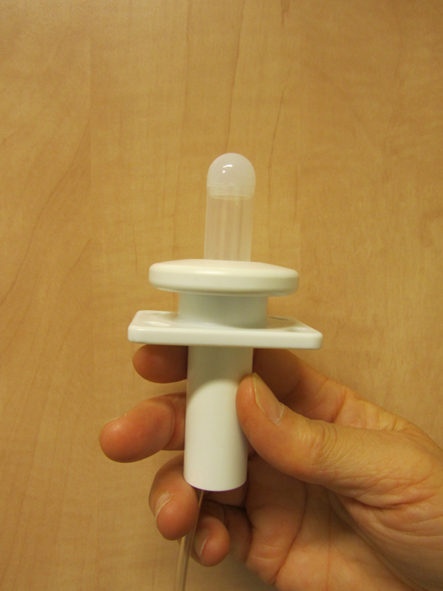
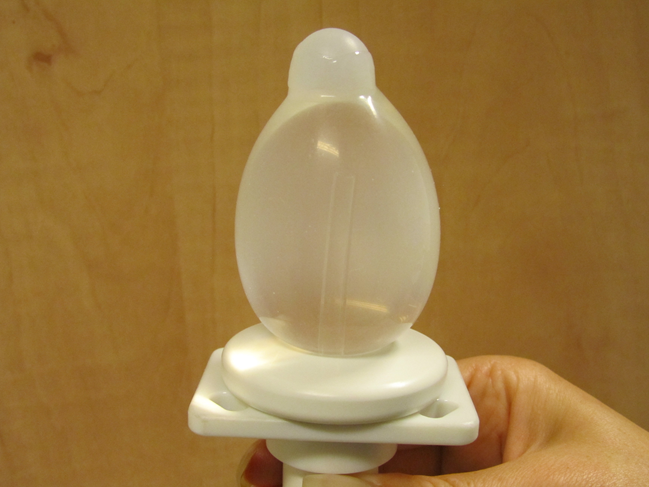
In this research healthy (non vaginistic) women were shown four movies: two sexual movies (one high arousing female friendly pornographic movie, one erotic) and two non-sexual movies. The VPI was inflated during these movies. Women had to answer a lot of questions on emotions after the film. This is the first research showing that sexual arousal really improves the pleasantness of vaginal pressure. The women also reported that vaginal pressure is an exciting stimulus in the context of sexual arousal.
The research Reinhilde did on the topics we discussed and other studies related to this topic, are gathered in her book: Vaginal penetration: pain or pleasure? The role of fear and sexual arousal. The PDF of the book is available for free.
Just send an email to: reinhilde.melles@mumc.nl

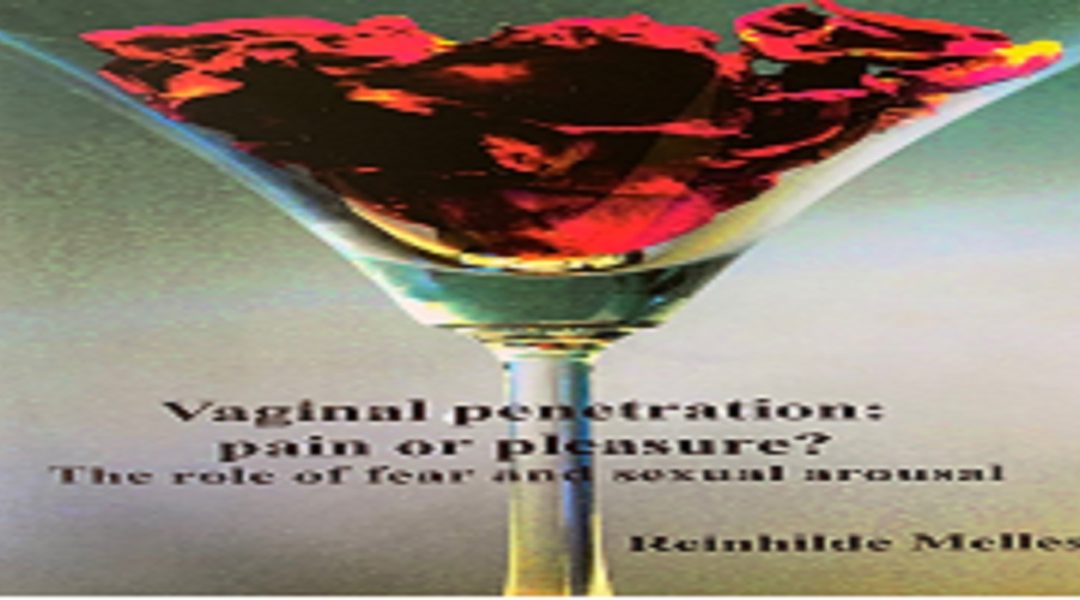
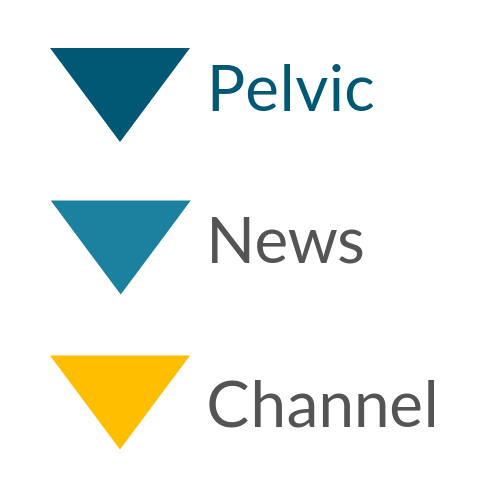

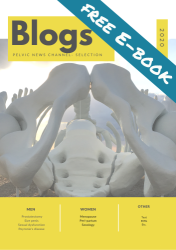




Recent Comments